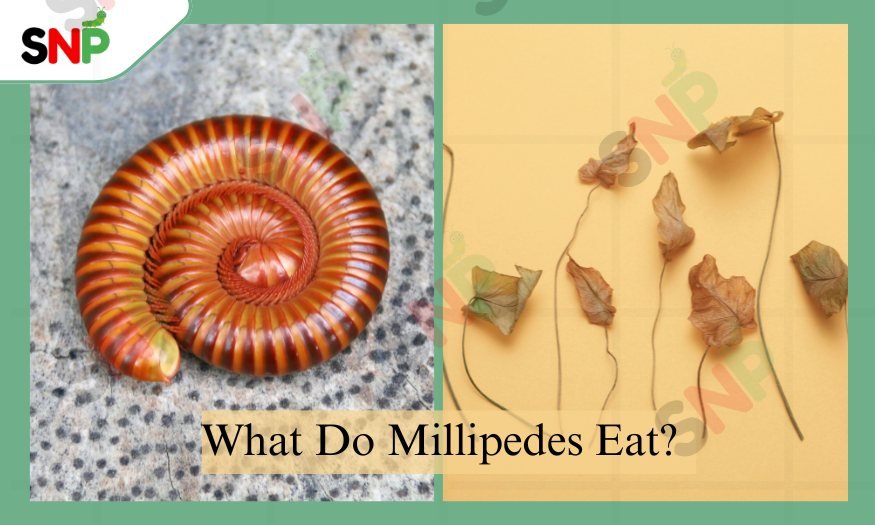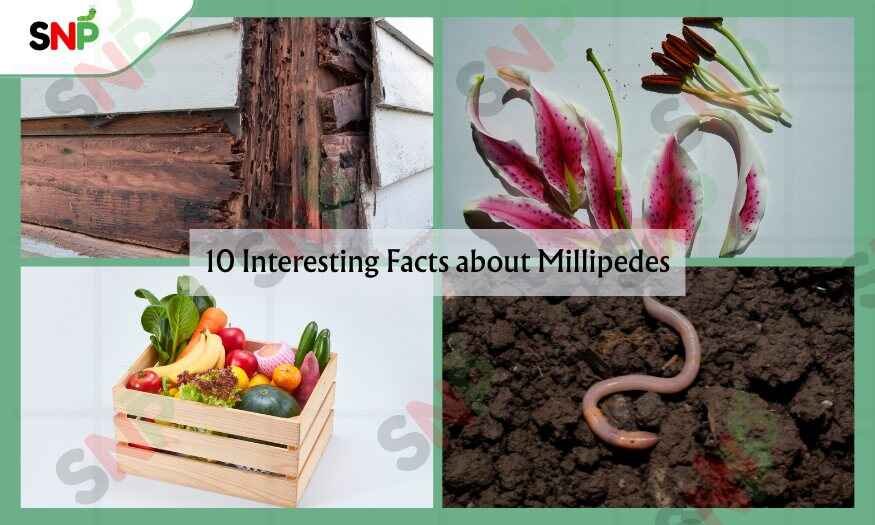What Do Millipedes Eat

The question of what do millipedes eat is an important one to ask. This can give us a lot of information about these interesting arthropods that are very important to the health of the ecosystem. Shocked right? Millipedes are the nature’s helpers because they decompose organic matter and return nutrients to the soil.
Introduction
Millipedes are animals that fall under the class Diplopoda. They are very easily seen decomposes in the terrestrial ecosystems. These multi-legged arthropods, have different feeding habits that make them the primary contributors to the environmental health. Many people consider them as pests but knowing what do millipedes eat can open our eyes to the fact that they are a part of the recycling system of nature.
What Do Millipedes Eat

Millipedes are mainly detritivores. They consume decaying organic matter, and not animals. Major part of their diet is made up of decaying plants, such as rotten wood, fallen leaves, and decomposing vegetables.
Millipedes mostly consume dead and decomposing plant materials such as fallen leaves, rotting wood, and bark. All of the food they consume should be moist to some extent.
They go after water, cow manure, clippings of lawn, and fruits that have started to decay. When these best sources get depleted, millipedes turn to plants, fungi, and fresh fruits to obtain their nourishment. They generally supplement their diet with old grasses, stems, and flower parts that they break down and thus become a part of the natural recycling process.
They mainly consume fungi and mushrooms, especially when the other food sources are not that easily available.
Millipedes, being vegetarian animals, are some of the few times that they may eat the remains of small animals like insects, worms, or snails, but such cases are very rare.
Once they have shed their skin, they consume it to replace the minerals lost such as calcium and even eat their own feces to ensure that they have absorbed all the remaining nutrients. They are more active and feed more in the rainy season because their feeding habits are dependent on moisture.
In general, millipedes are responsible for the decomposition of dead materials and soil enrichment.
10 Interesting Facts about Millipedes

Millipedes have definitely interesting characteristics that make them one of a kind among the arthropods:
- Millipedes are the ancient and modern representatives of the terrestrial fauna from 428 million years ago. The first known millipede was only 1 cm long.
- Although they are labeled as “thousand feet” in their name. But no millipede species even comes close to having 1,000 legs.
- Millipedes have the most interesting and unique defensive mechanisms. They become a solid ball when one of their parts is touched to protect their soft underparts.
- Millipedes develop through a quite complicated process called anamorphosis, during which they shed their skin 7-10 times before reaching sexual maturity. Each shed adds new segments and legs to the body, with young ones starting off with three pairs of legs only.
- Vast and diverse millipedes of the past, for example, Arthropleura, could compete with giant animals of today in length that surpassed 2m.
A Few More Facts about Millipedes
- Millipedes are able to live very lengthy lives, with their lifespan being 2 to 15 years depending on the species.
- The lifespan of the giant African millipedes is 15 years, while those of North American species are 2-3 years on average.
- Female millipedes lay 10 to 300 eggs in a breeding season. To protect the eggs, which are the developing offspring, they make nests out of the soil or the decaying matter of plants.
- Millipedes ecosytem engineers, are causing great changes in soil structure and nutrient cycling in the environment. Through their feeding, fungi and bacteria get the larger pieces of plant material broken up so they can continue reprocessing it further, as if it were smaller particles.
- The millipede genus exhibits a variety so wide that it is challenging to number them. Because of their diversity only 12,000 species of millipede have been described so far. The real number is way higher than 12000. New species appear constantly in different ecological niches.
Conclusion
For the people facing an invasion of millipedes, it is important to have in mind that recognizing the general habits of millipedes such as what do millipedes eat, etc can help you find some new methods of pest control. Make sure the methods are environmentally friendly and at the same time, you should still be in fovour of the recycling forces of the Nature rather than opposing them.
Related Posts
Do Millipedes Bite Humans? Discovering the Truth
Introduction To Do Millipedes Bite Human? Did you ever see a long, multi-legged creature moving on your floor or crouched in a wet corner? You must have wondered, do millipedes bite humans? They may look scary at first sight, but the truth is not that scary. Here in this blog, we will reveal whether millipedes […]
Bumblebee Millipede: The Complete Guide for American Homes
Are you a person who once caught the image of a very rude and yellow-and-black living being in your backyard, or even lurking on your floor? If so, you have probably seen the bumblebee millipede. This amazing millipede has appealed to nature enthusiasts as well as the individuals who are concerned with household bugs in […]
Places Where You Can Find American Giant Millipedes
As you walk around woodlands, parklands, or even in your backyard in the eastern United States, it is easy to imagine that you will step on a long, many-legged beetle crawling laboriously along the ground. If you have ever stopped and wondered what an American giant millipede looks like, you are not alone. These amazing […]
Quick Link
Services
